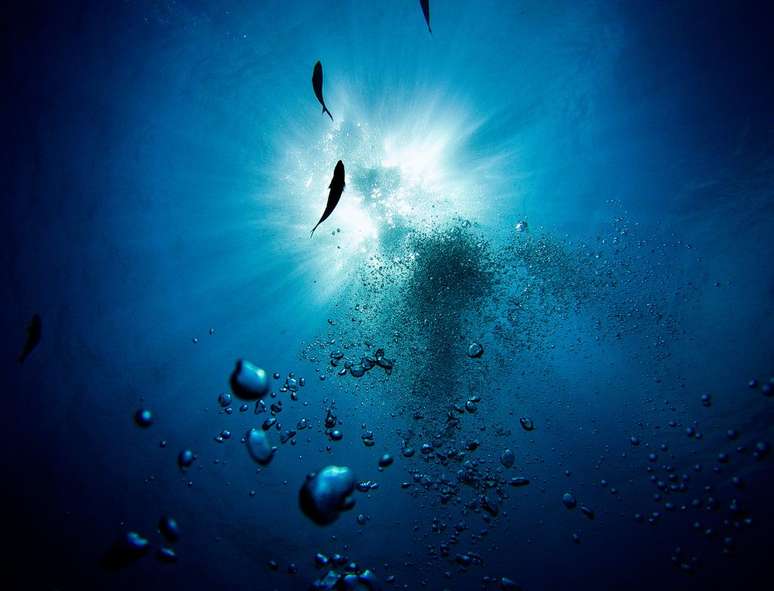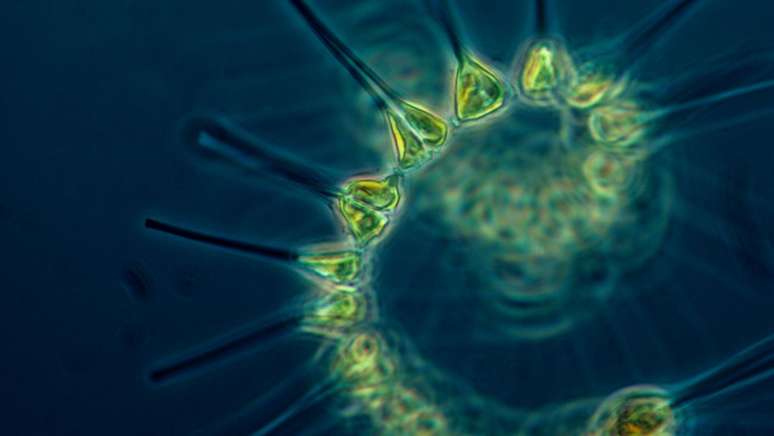Part of the plankton, a group of strange creatures limits the worst negative effects caused by heat waves in the ocean, keeping the ecosystem alive
Tiny ocean creatures, which have both plant and animal characteristics, could be the way to avoid the worst side effects of heat waves at sea. Surprisingly, biologists have found that mixotrophs are able to keep the ecosystem minimally balanced, reducing the risk of mass die-offs of fish, mammals and birds when temperatures rise.
- Heat wave hits Antarctica; the temperature was 40°C above average
- Heat waves will worsen in Brazil if no measures are taken
These living beings classified as mixotrophs, regardless of genus and species, are quite peculiar. This is because they are autotrophs, like plants, and produce their own food from energy obtained from light.
However, they are also heterotrophs, like animals, since they can feed on other organisms to obtain energy. Basically, they can feed on virtually anything, which gives them a good chance of survival when they lack prey (single-celled plankton) or sunlight.
In the sea, mixotrophs constitute part of the so-called oceanic phytoplankton and, as such, are the basis of the food chain of most marine ecosystems. As they proliferate – the good news is that they are experts at foraging and surviving – there should be no shortage of food sources for larger creatures such as copepod crustaceans and krill (similar to miniature shrimp). These feed other more complex beings and, consequently, the damage in the event of environmental imbalance is limited.
Pacific heat waves
Published in the magazine Aquatic microbial ecologya new study examined the effects of heat waves on waters along the Pacific coast of North America, near Alaska, for more than 10 years.

According to biologists and researchers at Western Washington University, in 2014, the area was hit by a long-lasting temperature heating, which lasted two years. New heat waves were observed in 2019.
As temperatures rose to a record 2.4°C above normal, mass die-offs occurred in the region, affecting hundreds of thousands of fish and birds. Fishing activity had to be stopped. However, the authors argue that the situation would have been much worse if more adapted mixotrophic species had not proliferated,
Effect of ocean microorganisms
During this decade-long period, the researchers evaluated how the population of mixotrophic organisms behaved, including different genera, such as Mesodinium, Strombidium, Gymnodinium AND Tripos.
During heat waves, these creatures began to make up the majority of the region’s phytoplankton, which shows that they were able to adapt to the new reality, unlike many species, and subvert the general rule.
During this period, they also played the important role of preventing an uncontrollable increase in stratification – the formation of layers with different densities and properties – of ocean water. When this happens, some layers can become oxygen-poor, harming life in fish, plants and other organisms.
If the process had reached its maximum potential, this would have represented the death of the entire marine ecosystem, but it was apparently saved, despite the losses, by the mixotrophs.
Source: Aquatic microbial ecology
Trends on Canaltech:
- Assassin’s Creed Mirage is free for a limited time
- Duna Part 2 arrives on digital platforms
- Second closest black hole to Earth discovered
- Loneliness accelerates biological aging and leads to health problems
- The 50 funniest Google Assistant jokes
- Manchester City-Real Madrid | How to watch the Champions League match?
Source: Terra
Rose James is a Gossipify movie and series reviewer known for her in-depth analysis and unique perspective on the latest releases. With a background in film studies, she provides engaging and informative reviews, and keeps readers up to date with industry trends and emerging talents.



![It All Begins Here: What’s in store for Monday 27th October 2025 Episode 1293 [SPOILERS] It All Begins Here: What’s in store for Monday 27th October 2025 Episode 1293 [SPOILERS]](https://fr.web.img6.acsta.net/img/41/39/413989e0bd493a6d9c6b47c276d6bcf1.jpg)

